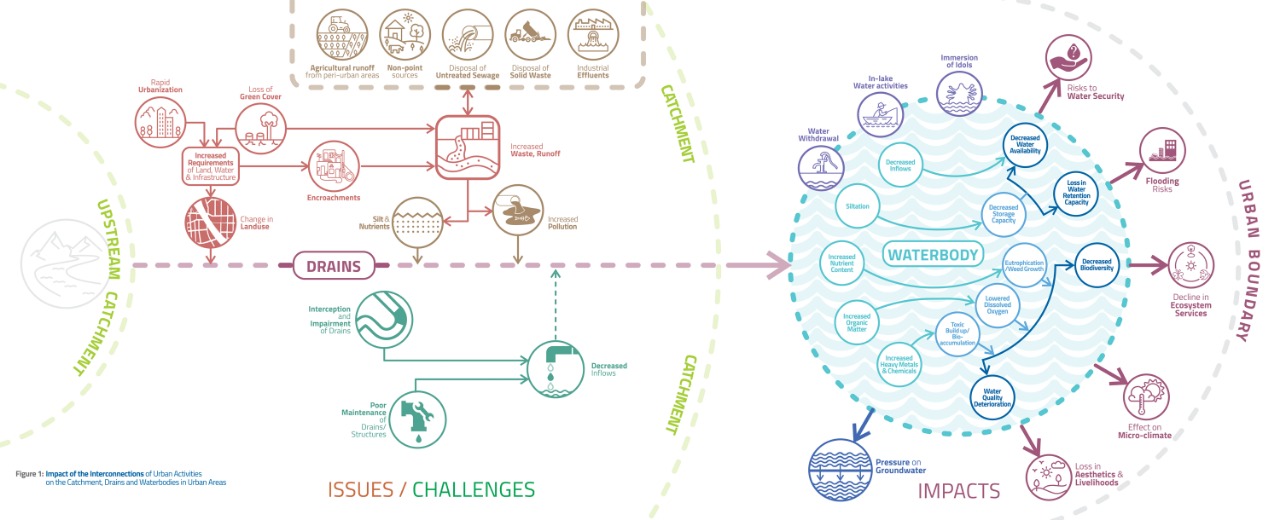Urban waterbodies
Urbanisation has been rapidly increasing in the last few years in India, in terms of economic development population and geographical boundaries .It is global observation that all urban expansions have engulfed water bodies in their territories and peripheral regions. Water Bodies have been the backbone of resource sustainability in any urban conglomerate. They cater to different needs - drinking, washing, fishing and irrigation, they are an essential resource for industrial development, store water, serve as a retention mechanism that captures flash floods, help maintain ground water levels through recharge, support biodiversity and avian fauna, and influence a city's micro-climate. Apart from performing the above mentioned ecosystem services, waterbodies and natural carbon sinks that help in mitigating global warming and accumulation of greenhouse gas emissions, primarily originating from cities. Today, the availability and quality of water resources are under considerable threat. Our water bodies are being degraded in multiple ways. The many challenges being faced by urban water bodies include
1.
The
Solid Waste
Challenge
Solid waste creates a bigger challenge than any other issue as in many cities, water bodies are treated as dump yards not only for municipal solid waste but also for construction & debris (C&D), biomedical waste faecal sludge from septic tanks, industrial hazardous waste, food waste from hotels and restaurants - all of which have contributed to converting these water bodies into cesspools. Indiscriminate dumping of solid waste results in increased organic load, toxic and inert waste, blockage of water flow, foul smell, and reduced aesthetics of these waterfronts.
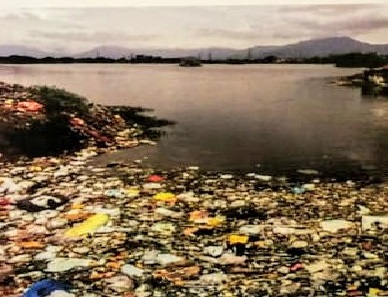
2.
The
Wastewater Pollution
Challenge
Deterioration of water quality due to wastewater (municipal & industrial) discharged through storm drains and open nallahs into water bodies is a common challenge. In peri-urban areas, agricultural runoff containing fertilizers and pesticides also deteriorates water quality. Activities like bathing, washing clothes, washing cattle, recreational activities like boating, and cultural activities like idol immersions also contribute to polluting water bodies. This poses a major health hazard to those consuming these waters.
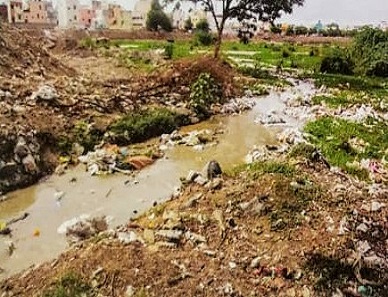
3.
The
Weed & Silt
Challenge
Both point and non-point source flows bring silt pollutants and nutrients into water bodies, deteriorating the water quality and causing the manifestation of water hyacinth leading to eutrophication. Majority of urban water bodies are overtaken by invasive species and heavily covered by weeds, especially during the monsoon. These species cover the entire water spread and disturb the water body ecosystem.Increase in weeds (especially invasive species) and silt, in turn leads to loss of habitat and decline in species associated with the ecosystem. The resulting loss is not only a burden on the environment but also an economic and social burden on the public whose lives are directly dependent on the natural resource.
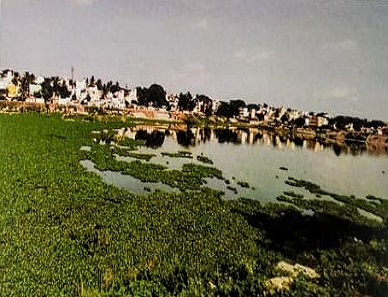
4.
The
Drain & infrastructure
Challenge
Lack of regular maintenance of inlet and outlet structures leads to their deterioration. Clogging conditions near the inlet and outlet structures, seepage at outlets, and breached bunds are commonly observed.In many cases, due to alteration of natural drainage channels and development of new urban infrastructure, including interception of drains in the upstream, the waterbodies are not refilled, and often go dry. On the other side, storm water having no alternate path, causes floods near the obstructed drains.
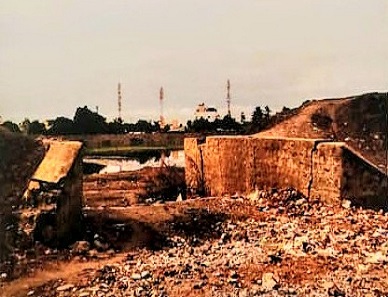
5.
The
Social
Challenge
Unauthorised squatters and large-scale encroachments by developers is another challenge facing urban water bodies. These result in obstruction of stormwater flows, thus making the water bodies defunct or dry for most of the year. Wastewater generated from these squatters also contributes to deterioration of water quality as does open defecation.Over the years, people have been disconnected from their water history, primarily because of a lack of knowledge and sensitivity towards the waterbody ecosystem. Citizens are not aware of the problems that dumping of solid waste, discharging of wastewater, open defecation, or encroachments, pose to these water bodies. A general misconception among people is that keeping a city clean is the government's responsibility and not theirs.Many livelihoods are completely dependent on these water bodies and their decline poses a challenge for the communities to survive.
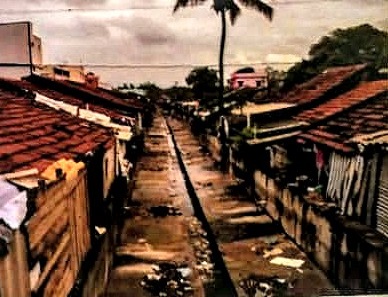
The Essence of Waterbody Rejuvenation
Waterbody rejuvenation encompasses the following
- Restoring the wholesomeness of the waterbody to its original state
- Conserving and enhancing its biological diversity
- Conserving and preserving its ecosystem services
- Reviving the waterbody into a (new) live form, if deteriorated altogether (beyond repair) over time due to anthropogenic pressures
- Managing the waterbody within the context of sustainable development, while meeting the current and future demand without compromising on its ecological health/character
Lake Rejuvenation Process
